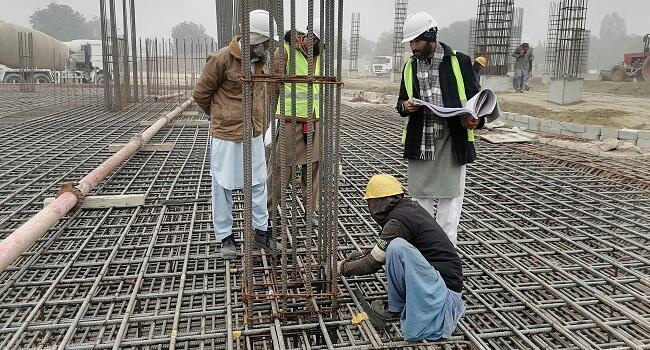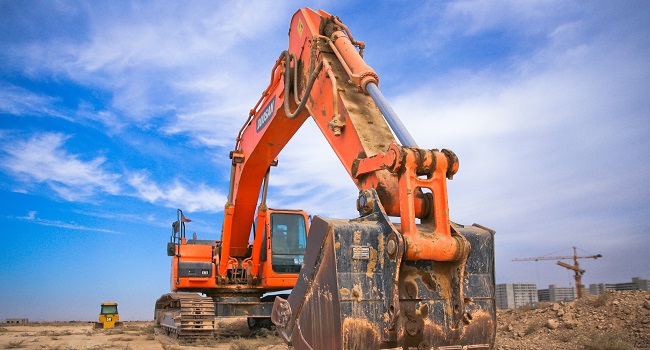Construction sites can be busy, complex, and sometimes chaotic environments. Whether you’re a construction worker, a DIYer, or someone in the construction field, it’s essential to be aware of the most common mistakes that can occur on these sites.
By understanding these mistakes, you can take steps to prevent them and ensure a safer, more efficient, and successful construction project. Let’s look into the top 10 mistakes to avoid on a construction site and provide some tips for regular maintenance and timely repair of construction tools and heavy equipment.
1. Ignoring Safety Protocols
Safety should always be the top priority on any construction site. Failing to wear proper personal protective equipment (PPE), like hard hats, safety goggles, gloves, NIOSH-approved masks, and steel-toed boots, or disregarding safety guidelines can lead to accidents and injuries. Always familiarize yourself with the specific safety protocols for your site and make sure you follow them consistently.
2. Poor Communication
Clear and effective communication is crucial for the smooth operation of any construction project. Inadequate communication among team members can lead to misunderstandings, mistakes, and accidents. To avoid these issues, establish clear communication channels and protocols on the construction site. This includes regular team meetings, using appropriate signage, and making sure everyone understands their roles and responsibilities. Encourage open dialogue among team members, and address any concerns or questions as they arise.
3. Inadequate Planning and Scheduling
Proper planning and scheduling are essential to the success of any construction project. Poor project planning can lead to delays, cost overruns, and other issues that can negatively impact the project. Before starting any construction work, create a detailed project plan that includes timelines, budgets, and resources required. Regularly review and update the plan as needed to ensure that the project stays on track and within budget.
4. Poor Quality Control
Maintaining high-quality standards on a construction site is crucial to prevent safety hazards and potential legal issues. Failing to monitor and maintain these standards can result in subpar work that may need to be redone, causing delays and additional costs. Implement a robust quality control process that includes regular inspections, documentation, and corrective actions when necessary. Train all team members on the importance of quality control and their role in maintaining high standards.
5. Insufficient Training
A well-trained workforce is essential for the safe and efficient operation of a construction site. Untrained or inexperienced workers can make mistakes that lead to accidents, delays, and cost overruns. Ensure that all workers on the construction site have the necessary training and skills to perform their tasks safely and efficiently. This includes providing regular training sessions and on-the-job coaching, as well as ensuring that workers have access to relevant resources and materials.
6. Skipping or Rushing Inspections

Regular construction site inspections are crucial to identify and address potential safety hazards and ensure that all aspects of the construction project meet quality and regulatory standards. Skipping or rushing required inspections can lead to serious safety hazards and potential legal issues. Develop a comprehensive inspection schedule and ensure that all team members understand the importance of thorough inspections. Assign qualified personnel to perform inspections and provide them with the necessary tools and resources to do their job effectively.
7. Improper Storage of Materials and Equipment
Proper storage of materials and equipment is essential for maintaining an organized and safe construction site. Storing materials and equipment improperly can lead to accidents, damage, and theft. Designate specific storage areas for different types of materials and equipment and ensure that all team members are aware of these locations. Secure equipment when not in use and maintain an organized site to reduce the risk of accidents and damage.
8. Inadequate Supervision
Lack of proper supervision can result in workers making mistakes, cutting corners, and compromising safety on the construction site. Effective supervision is crucial to ensure that work is being completed correctly, safely, and according to the project’s specifications. Assign experienced supervisors to oversee the work and provide them with the necessary tools and resources to effectively manage their teams. Encourage open communication between supervisors and team members, and address any concerns or issues as they arise.
9. Failure to Adapt to Changing Conditions
Construction projects can be affected by various factors, such as weather, site conditions, and unforeseen obstacles. Failing to adapt and adjust the construction plan accordingly can lead to delays, cost overruns, and safety hazards. Stay informed about any changes in conditions and be prepared to adjust your plans as needed. Communicate any changes to your team members and update your project plan to reflect these adjustments.
10. Non-Compliance with Building Codes and Regulations
Adhering to local building codes and regulations is essential to ensure a safe, compliant, and successful construction project. Not following these guidelines can result in fines, legal issues, and even the need to redo work. Familiarize yourself with all applicable codes and regulations and ensure that all team members are aware of their responsibilities in maintaining compliance. Regularly review and update your knowledge of these codes and regulations, as they may change over time.
Regular Maintenance and Timely Repair of Construction Tools and Heavy Equipment

Proper maintenance and timely repairs of construction tools and heavy equipment are crucial for ensuring their safe operation, extending their lifespan, and improving their performance. Here are a few tips to achieve this:
- Create a maintenance schedule based on the manufacturer’s recommendations, including inspecting, cleaning, lubricating, and replacing worn parts.
- Train workers on proper tools and equipment used to prevent damage and wear.
- Conduct regular inspections to identify signs of wear, damage, or malfunction and address issues immediately.
- Maintain detailed records of maintenance and repair activities for future planning and identifying patterns of wear or issues.
- Establish a clear repair plan, including qualified technicians, access to necessary replacement parts, and a reporting process.
- Invest in high-quality, durable tools and equipment to reduce the need for frequent repairs. For repairs, choose top-grade aftermarket parts for affordable materials that don’t compromise performance and safety.
- Store tools and equipment properly in designated storage areas to protect them from damage, theft, and exposure to the elements.
The Takeaway
Avoiding common mistakes on a construction site is essential for ensuring safety, efficiency, and the overall success of a project. Additionally, regular maintenance and timely repair of construction tools and heavy equipment play a vital role in preventing accidents and prolonging the life of these essential resources. By being aware of these mistakes and following the recommended practices, you can contribute to a safer and more productive construction environment.






























